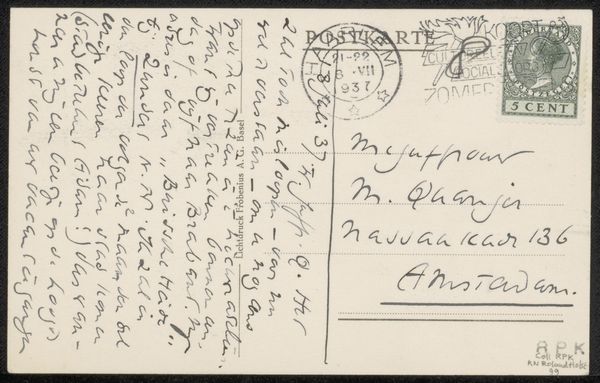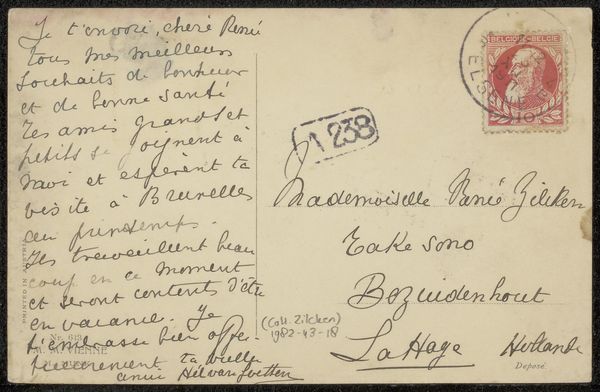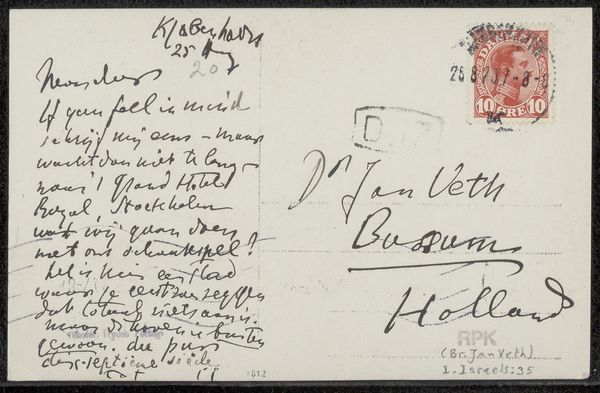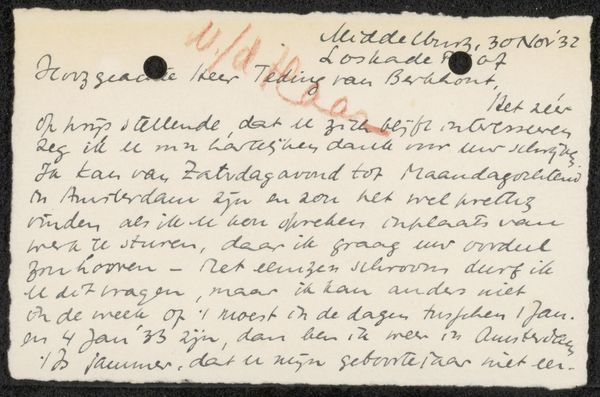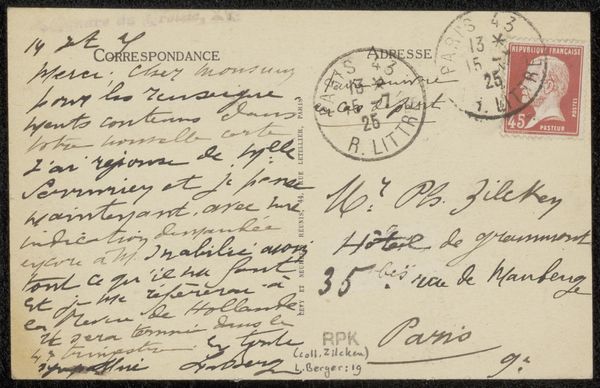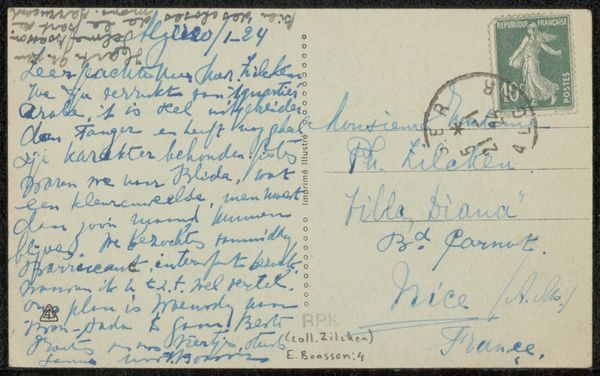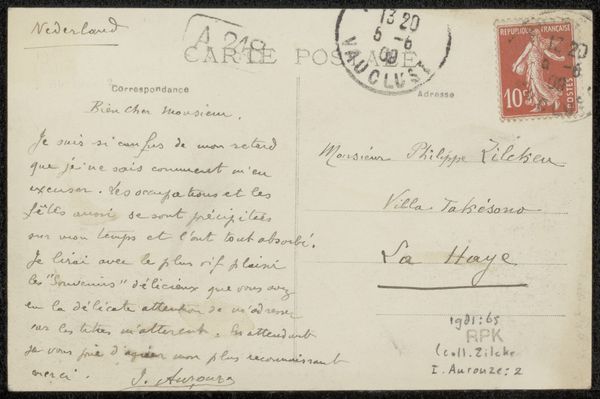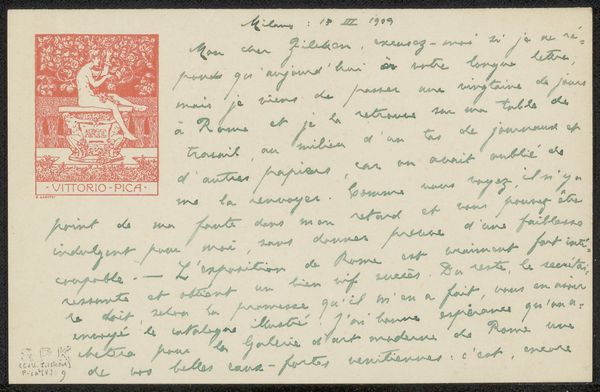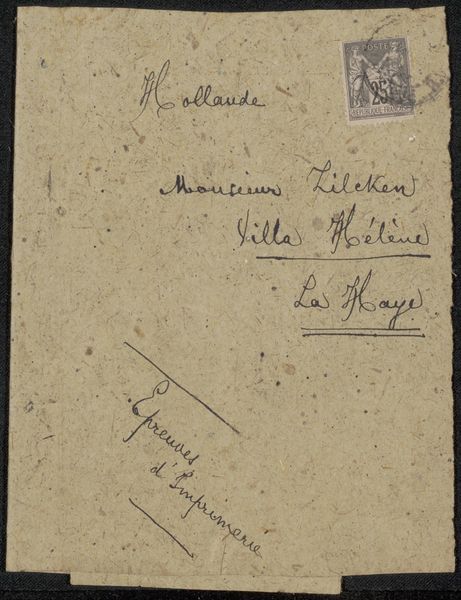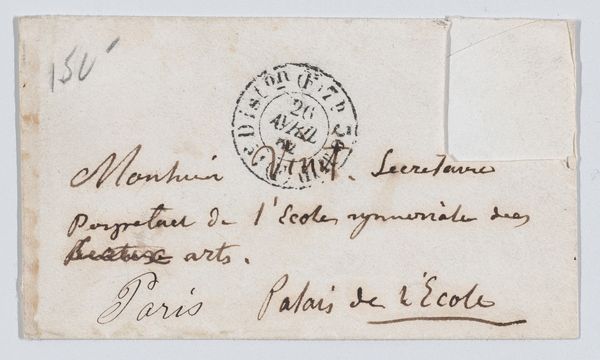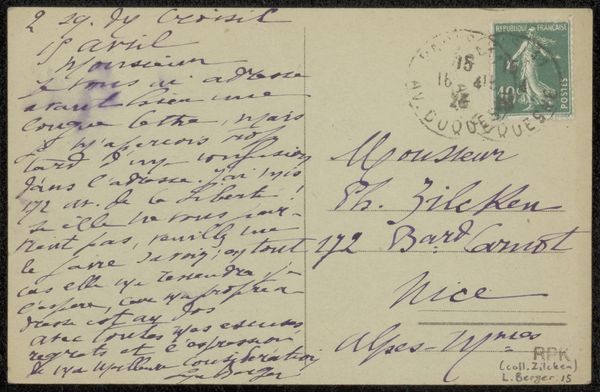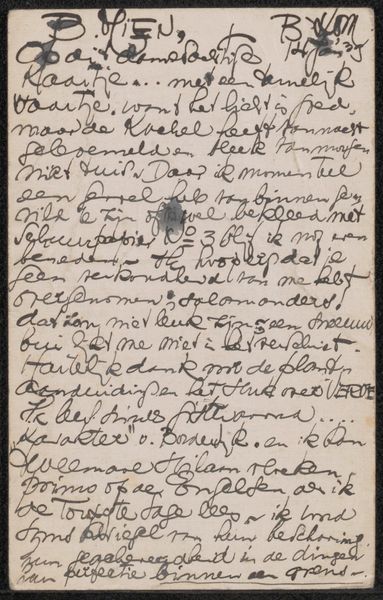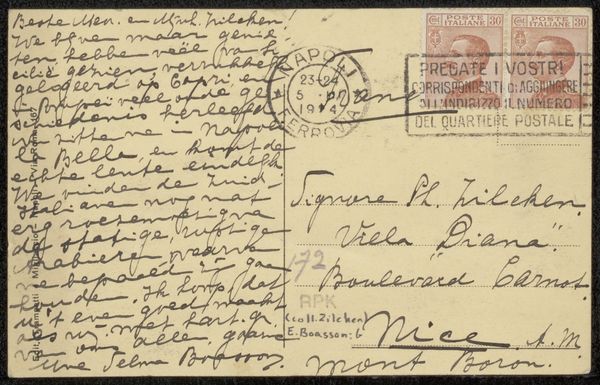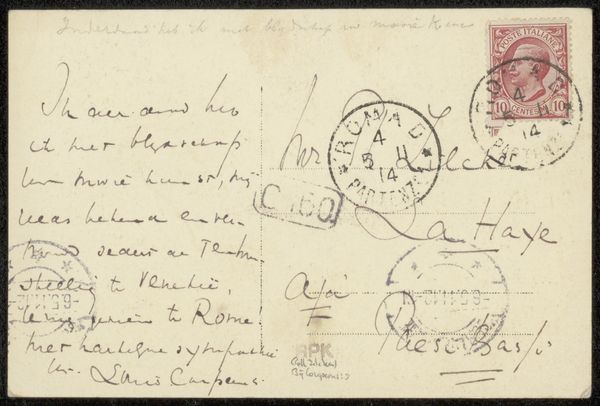
drawing, ink, pen
#
drawing
#
hand-lettering
#
sketch book
#
hand drawn type
#
personal sketchbook
#
ink
#
hand-drawn typeface
#
intimism
#
pen-ink sketch
#
ink colored
#
pen work
#
sketchbook drawing
#
pen
#
sketchbook art
#
calligraphy
Copyright: Rijks Museum: Open Domain
Curator: We're looking at "Prentbriefkaart aan Philip Zilcken," or "Picture Postcard to Philip Zilcken," which Baronne Madeleine Deslandes created sometime before 1908. It seems to be an ink drawing. What strikes you initially? Editor: The material of the card itself, it's very textural! And the different pens they may have been using creates different lines... it’s such an intimate glimpse into daily communication, reduced to something so raw in its materiality. Curator: Indeed! The act of handwriting holds so much intention, don't you think? In this particular case, the looping script feels almost performative, like an embrace. This handwriting appears frequently in personal sketchbooks as well. Editor: Handwriting, especially in personal letters and postcards, *is* material labor. Someone had to source the ink, cut the paper, design and print the stamp, not to mention deliver the thing! These elements represent networks of production. Curator: Exactly! And consider the imagery of correspondence. Before digital communication, handwritten notes created bridges and symbolized interpersonal connection in very material ways, right? In that moment when one touches the physical item is a moment of exchange and intimacy. Editor: But it also implies distance, lack, absence. The *only* way this connection can occur is through distance: if they lived in the same house they'd just speak to one another, face-to-face! You know, so much art history excludes the study of the so-called minor arts or everyday objects that aren’t thought of as artistic expression. But this letter contains as much cultural information about its place and time. Curator: It's easy to forget now in our digital age, but objects such as postcards *are* of their place and time! And it speaks to an intimism. Perhaps this reflects a deeply ingrained cultural desire for connection. It gives us a new way of imagining their era, of France and its neighbors, with greater warmth. Editor: I think I see the warmth you mean, in the effort that went into something destined to become...obsolete? Regardless, thank you for drawing my attention to it; I leave with a fresh appreciation for such unassuming forms of communication.
Comments
No comments
Be the first to comment and join the conversation on the ultimate creative platform.
